How-To: Smoked Prime Rib
Get ready for some prime eating. If you ask us, the only thing better than a roasted prime rib is a smoked prime rib. Melt-in-your-mouth tender, cooked to perfection with a crunchy salty exterior mixed with that wood-fired flavor. Yeah, that's all we need to say. Since prime rib is an investment, make sure you're cooking it to perfection with our step-by-step tutorial.
What is prime rib?
Also known as a standing rib roast, the prime rib comes from the same area as the ribeye, the primal rib section. It has a large "eye" of meat in the center which is heavily marbled with fat (aka flavor), as well as the outer muscle (spinalis dorsi) known as the "lip" or "cap". Despite its name, "prime" does not refer to the grade of USDA Prime so be sure to double-check the grading of your beef before you buy.
You'll Need:
-
1 Boneless* Prime Rib Roast, about 6 lbs. Plan on one pound of uncooked prime rib roast per person, or one rib for every two diners.
-
1 Jar Prime Time Butcher's Blend or Multi-Tool Ultimate Blend
-
Butcher's Twine
-
Smoker (we used the Pro Smoker PK100): Go Pro or go home. This commercial-quality smokehouse will provide you professional results every time. For this recipe we used Mixed Hardwood sawdust.
-
Temperature Probe: No matter what kind of smoker you use, it’s important that you have a way to gauge temperature accurately. Prime rib is an investment and something you don't want to overcook.
*Bone-in or boneless?
We recommend boneless. There's not a significant flavor difference between bone-in-or boneless, especially when cooking it low and slow in the smoker. Bone-in offers a more dramatic presentation, but you'll be paying for the weight of bones you won't be able to eat--and boneless is easier to slice.
1. Truss
Since we're cooking a boneless roast, we're going to truss the prime rib to ensure the meat is cooked evenly. The areas where the bones are removed can be loose so trussing ensures an even shape end-to-end. To start, remove your prime rib from the refrigerator at least 1-2 hours before cooking. Turn your roast so the fat-side of the meat faces up and tie one end of the kitchen twine firmly around one end of your roast. Firmly knot it, pulling the meat together into a rounded shape. Loop the string into a large circle, tuck it under the roast, then tie a second section with the twine. Repeat 3-4 times or until roast feels secure.
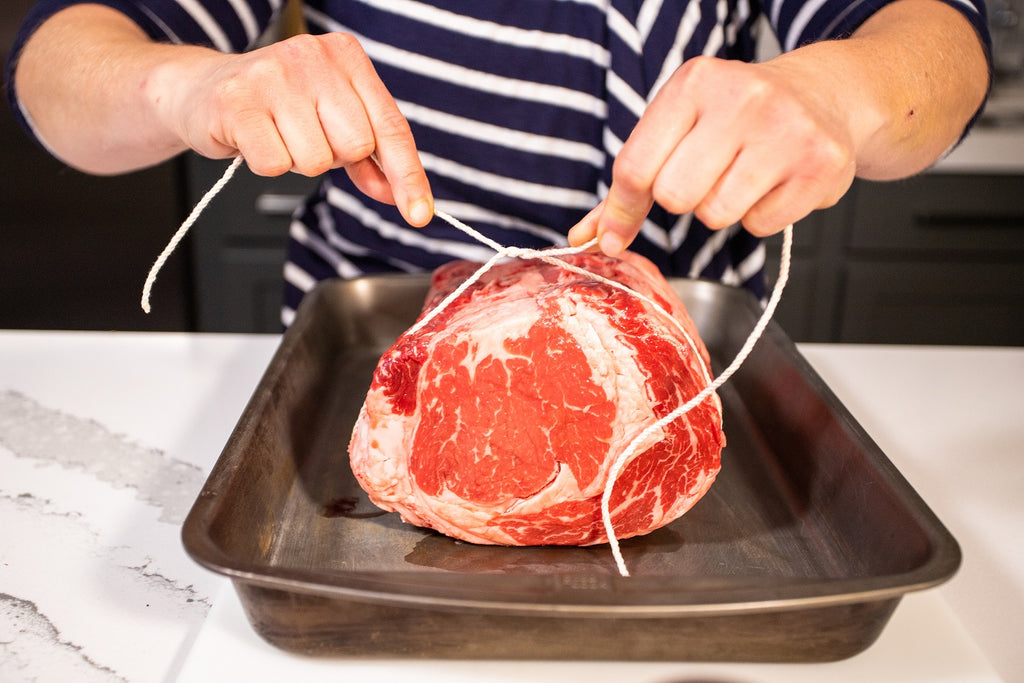
2. Season
When you're dealing with a flavorful cut like prime rib, simple is usually best. The thickness of the cut means that a generous amount of seasoning is important. We like to use a coarse seasoning like Multi-Tool Ultimate Blend, that adds a savory, salty, crunchy layer to balance out the fatty interior. Multi-Tool has the perfect blend of coarse salt, pepper, spices and herbs which are key key to giving your roast that traditional crackling and delicious crust.

Give it a good drizzle with some olive oil to help the seasoning stick to the meat. Massage gently and recoat with seasoning where needed.
3. Smoke
Preheat your smoker to 125° F, dampers closed (or smoke on). Place the roast directly on the smoker rack and increase the temperature to 185° F. Cook for 1 hour.

After one hour, increase the temperature to 215° F, and cook an additional 2 hours and 45 minutes, or until internal temperature of roast reaches 135° F for medium-rare or 140° F for medium. We don't recommend anything above 140° F as your meat will start to become dry and leathery.
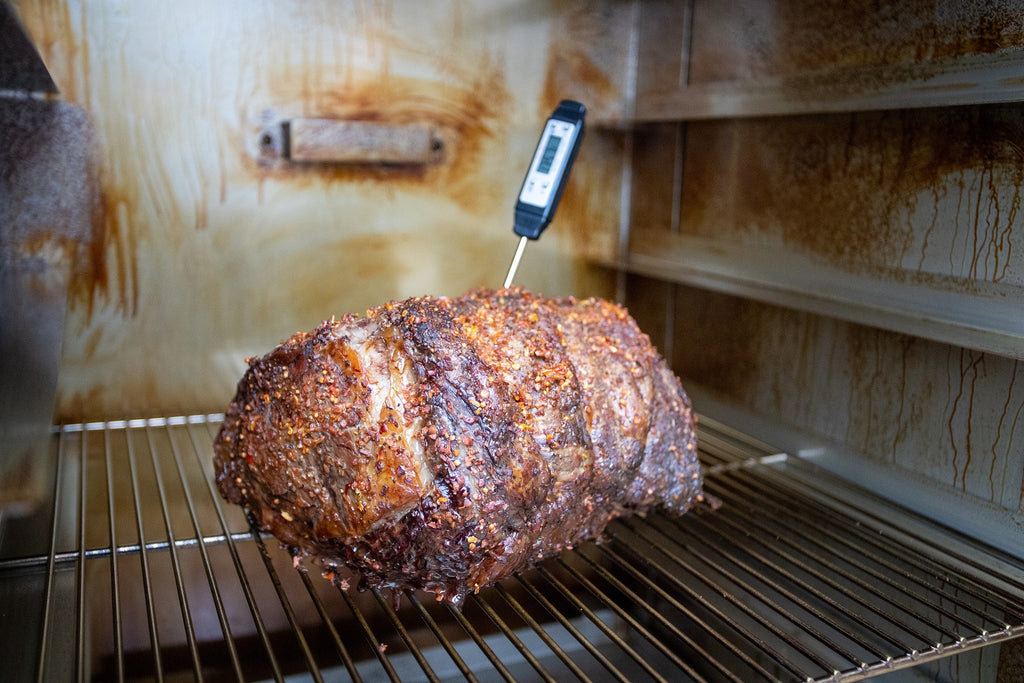
Allow your roast to rest for 30 minutes before slicing to let the juices redistribute through the meat, slice, and serve!
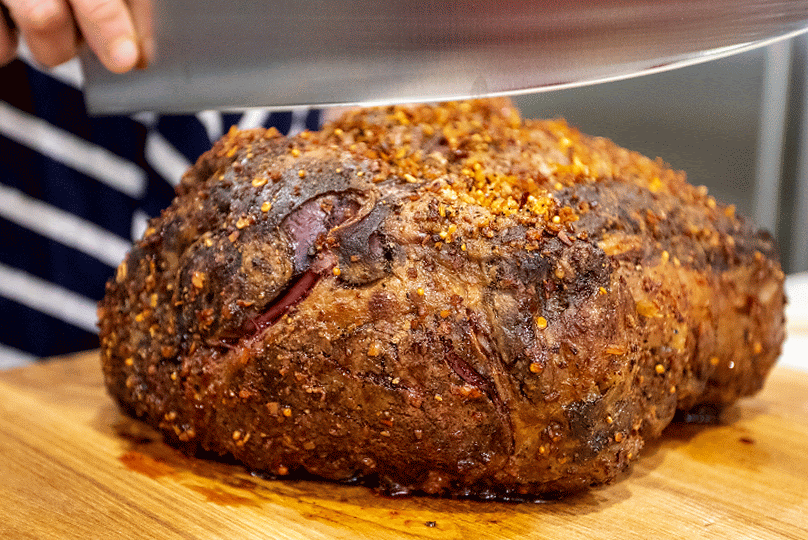
Ready to try it for yourself? Grab a bottle (or two) of Multi-Tool Ultimate Blend
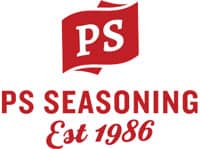
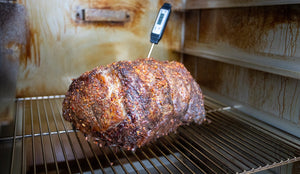



4 comments
Going to try this on my green mountain
You fail to mention at what point the wood chips come into play, or for how long. Also I believe I’d have the top and bottom dampers about a third open. I’ve had my Pro 100 (Cabelas) for over 12 years now. It’s a flawless piece of machinery that I’ve smoked cured sausage, bacon, and hams on the low setting, chickens, ribs, and primes on the high setting. You folks are the best! RAY
Thanks for sharing tasty prime rib food recipe and I think this recipe will be the best option for family events and little parties waiting for more updates from your side like this one.